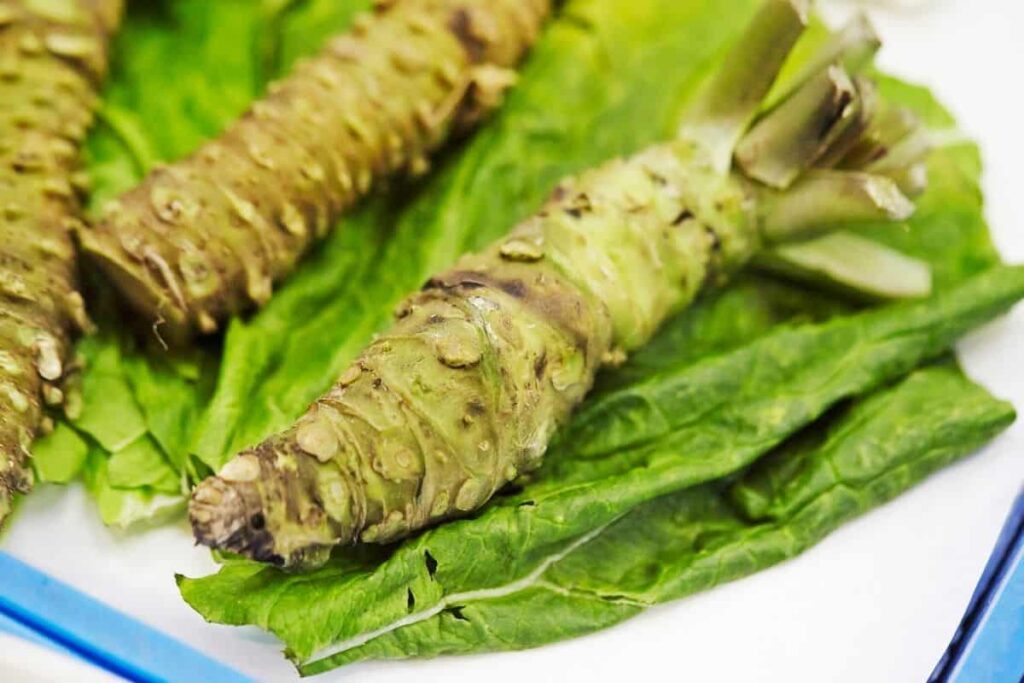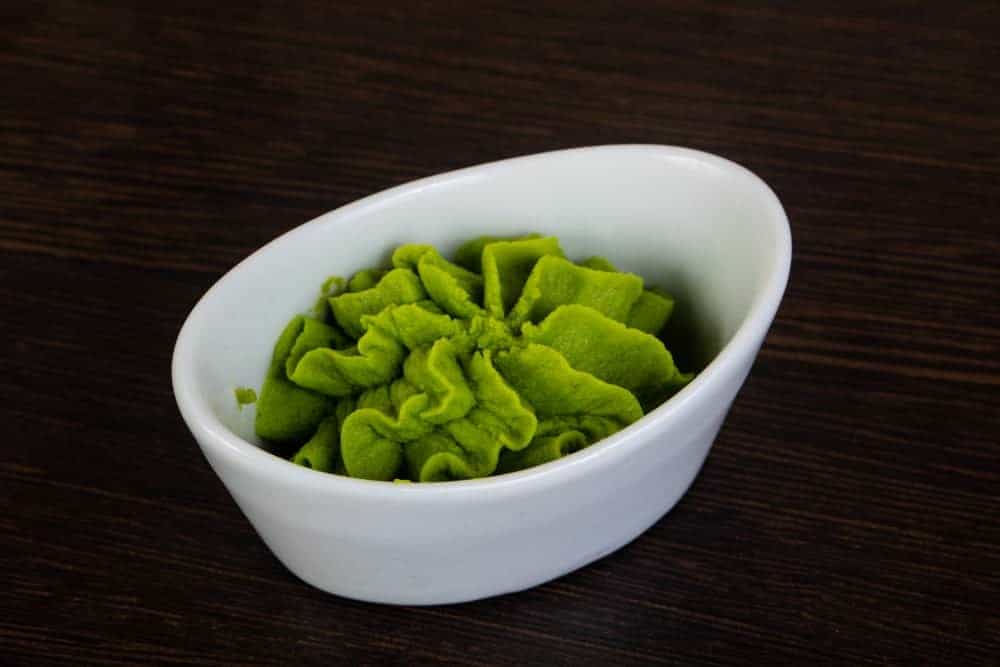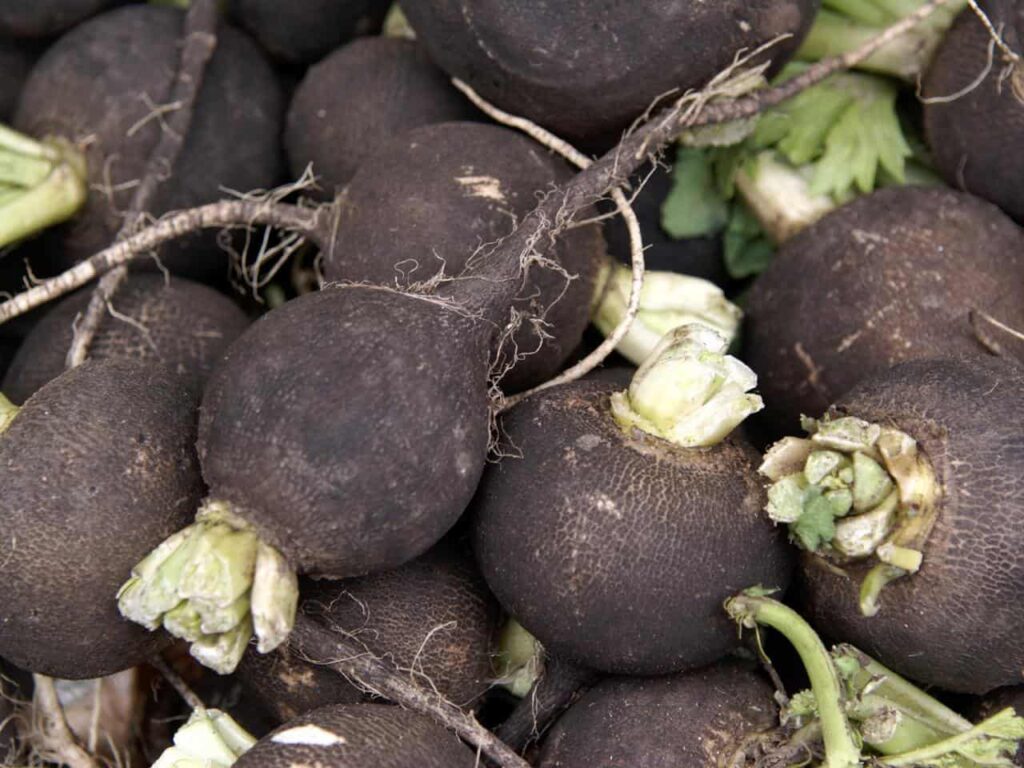Ever wondered why we eat Horseradish when it has ‘horse’ in it? Well, we can’t provide the answer to that question. But yes, if you are here to discover more about Horseradish, including its substitutes. Congratulations! You have found your lighthouse.
Khren, aka Horseradish, is a root vegetable usually used for its pungent flavor and unique taste. Not only does it add flavors to the dish, but it also increases appetite. Moreover, this root vegetable has some medicinal values as well. Although Horseradish is readily available in the market, you might sometimes face a scarcity.
What if you suddenly run out of Horseradish? Are you going to give up on the dish you are making simply? Hell no!
Every single ingredient has its substitute. And Horseradish is not exceptional. Hence, it is time for you to show your excellent culinary skills and wisdom. Your job is just to find suitable replacements and apply them.
Now the predominant question here is what the substitutes are? Here’s the list:
- Wasabi or wasabi paste
- Mustard
- Ginger
- Black Radish
- Daikon
- Sauerkraut
In case you are clueless about how to use them effectively, hold tight! Your answers are on the way. Let’s dig into the details a little more…
What is Horseradish?

Horseradish is one of the members of the family Brassicaceae. To be more specific, Horseradish is a perennial plant of this family. The plant is cultivated primarily for its roots used as spice and condiments all over the world.
The origin of Horseradish is said to be Western Asia and Eastern Europe. However, this famous root vegetable has different names in different places. For example, people of Europe are pretty familiar with the term Khren, an alternative name for Horseradish. So see, you got a competitor in the nicknames department!
The word Horseradish has been derived from English. It combines two words, ‘Horse’ and ‘radish.’
The intense flavor and taste of this favorite kitchen item are because of its allyl isothiocyanate. When you crush the flesh of Horseradish, it releases the enzyme myrosinase. Now the reaction of this enzyme on glucosinolates sinigrin and gluconasturtiin causes the specific flavor to come out. Because of allyl isothiocyanate, Horseradish can irritate the eyes and other mucus membranes of our body.
Commonly, Horseradish is used in a mashed form. Reference to Horseradish in culinary usage means the mashed roots mixed with vinegar. This thing can be stored for months. Initially, it is beige or white, but it becomes dark and loses its strength over time.
MEDICINAL USES
Horseradish doesn’t only spice up the food but also presents itself with various medicinal values. Let us know a little more about the health benefits of this root vegetable.
- Contains vitamins and minerals
This little spice contains lots of vitamins and minerals. Vitamin C, Folates, Magnesium, Calcium, Potassium, and Zinc are just a few to name. In addition, you might understand well that there are very few edible sources of potassium. So this could help in building proper potassium levels as well. Besides, taking some vegetables or food rich in vitamins and minerals is nothing but polishing our health. Hence, Horseradish is beneficial for all of us.
- Reduces inflammation
Horseradish is the relative of the mustard plants or plants similar to that. Like all other mustard family plants, Horseradish also has a specific ingredient called sinigrin. Now, this particular component helps in reducing inflammation. Some scholars claim that sinigrin even helps in atherosclerosis. However, since more research is going on regarding its effectiveness in atherosclerosis, this notion is still doubted by a group of people.
- Prevents cell damage
Since Horseradish is rich in antioxidants, it protects us against cell damage. Even it has been said earlier that this root vegetable can protect the digestive system from developing cancer cells. More research is going on this topic.
- Respiratory health
If you have taken Horseradish before, you might have noticed the different burning sensations, especially in your throat, nose, and sinuses. Besides setting your throat on fire and bringing flood in your eyes, this burning sensation can help in improving respiratory health. It is believed that Horseradish can help with sinus issues and bronchitis.
Horseradish Substitutes
Like every other ingredient on this earth, Horseradish also has some replacements. Let’s know what they are and how to use them.
- Wasabi/wasabi paste
The best alternative for Horseradish is wasabi and wasabi paste. Wasabi is also known as Japanese Horseradish. Since both plants are similar and related to each other, the test components are almost the same. Go to any grocery store, and you will not have a hard time finding them in heaven and hell. Outside Japan, wasabi paste is a combination of horseradish paste and some food coloring. Hence both are not much different.
Now comes the cons of the substitute. Since it is a substitute, it is better if you do not expect the same results as Horseradish since it is a substitute.
One noticeable downside of the ingredient is that they are green in color. Unlike Horseradish, it might add a slight green hue to the dish. If that is not a problem, then you are good to go.
Wasabi is a little milder than the former. That means you will have to add a little more of the amount of Horseradish that you generally use. Some recipe books and some people also suggest increasing the quantity to 50%. I will recommend you to start with a small amount and gradually increase if necessary.
- Mustard
Mustard and Horseradish are members of the same family. Meaning they are cousins, to be specific. Hence, both of them are similar to each other. And not only from this family perspective but also from the components, they are identical. Yet, one aspect differentiates them. Mustard is a seed plant. Meaning the seeds of these plants are generally used in the culinary department. On the other hand, Horseradish is cultivated for its roots.
Now comes the substitution part. Well, all types of mustard are not applicable to be excellent replacements for Horseradish. But brown mustard can present you with jaw-dropping results. Mustard comes with a unique zest that can easily replace Horseradish. Even the hotness is well balanced if you use mustard. You might use a coarsely ground version as well as a paste.
Moreover, the color is another feature of this substitute. It is yellowish or brownish. However, if it is added to a dish, the color does not differ from Horseradish. So, people worried about the color of the dish might be relieved with mustard.
Then comes the relevant question about the substitute: how much should be used? Well, you might use mustard in a 1:1 ratio. Meaning the quantity will be the same as Horseradish.
- Ginger
 ImageSource
ImageSource
Ginger is a well-known flowering plant cultivated for its rhizome or roots. This is a native of southeastern Asia. Besides using it as a spice element, ginger has some beneficial medicinal values that make it suitable for home remedies for several diseases.
Ginger is one of the most popular spice items in Indian, Chinese, Korean, Japanese, and other oriental cuisines. Its perfect spice level and hotness make a dish more flavorful.
Fresh ginger roots have a fibrous texture similar to that of Horseradish. And it also has a unique taste that starts to heat up slowly. In addition, fresh ginger roots have a different kind of taste. It presents an earthy and lemon-mixed flavor when added to any food.
Therefore, grated or ginger paste might be good options as replacements for Horseradish. If you are worried about the texture of the dish, ginger eases that problem as well. Besides, its color is the same as Horseradish. So one might not be tensed about the color of the food.
But then comes the con that the heating element of ginger is not as Horseradish. Ginger is milder than the former. Hence, you need to use it in a more significant amount as a substitute. Well, on this part, I will suggest you start with a small amount and gradually increase if needed.
- Black radish
Black radish is another member of the same family (family Brassicaceae) as Horseradish. So, these two are related to each other and have some similarities as well.
Black Radish, also known as Black Spanish radish, is a root vegetable. If we are supposed to trace its origin, there must be a debate. Some people claim that this vegetable is from Egypt. However, the origin of black radish is still questioned.
This root vegetable has thick black skin. The skin is rough and hard to peel off. And its flesh is white. Black radish has a unique taste and flavor that makes it suitable to use in many dishes. Various chemical compounds in it cause a sharp taste and flavor.
It has been claimed that the proper heat element of black radish is in its skin. However, people conscious about the color of the food might not find this the best solution because the skin is dark black or brownish. Peeling off the skin might be an option, but that results in a much milder taste.
Black radish is used in the same amount as Horseradish. Of course, if you wish to use the peeled version of it, make sure you add a little more to the regular quantity.
- Daikon
Daikon is another root vegetable popular in the oriental world. It originated from Eastern Asia and is used in various dishes throughout the region. Daikon is now available internationally as well.
It is cultivated for its long white roots. However, these fast-growing long leaves can quickly identify this vegetable.
Daikon is a winter radish with a less peppery flavor than any of the substitutes. It is milder than Horseradish and has a juicy, tangy texture. You might use it in soups and stews as a replacement for Horseradish. But remember, the spice level or hotness might not satisfy you.
- Sauerkraut
Sauerkraut originated in Germany. It is the shredded version of cabbage. The heads of the cabbage are grated and then mixed with lactic acid bacteria for fermentation. This specific item is widely consumed throughout Germany. As a result, it has a long shelf life. And because of its pickle flavor, it is enjoyed to the level best.
Now, one might replace Horseradish with sauerkraut in savory dishes. However, the spice level is not the same. It is sour and a lot milder than the former. But yeah, it tastes good when added to any savory dish.
Horseradish Sauce
A very famous version of this popular root vegetable is the g\horseradish sauce. This is a common condiment in the UK and in Poland. People there enjoy the horseradish sauce with roasted beef, commonly known as Sunday roast. Even this sauce can be enjoyed in sandwiches and salads as well.
A well-known german version of horseradish sauce is made with vinegar or lemon juice, aka citric acid. Following the trend, this german version of horseradish sauce has a different name. People call it Tafel Meerrettich there.
There is another version of this sauce that can be traced back to medieval times. It is a mixture of grated horseradish and mustard. And this prehistoric alternative is named Tewkesbury mustard. Krensenf or Meerrettichsenf are similar kinds of mustards famous in Austria and in parts of Germany.
The Russian people enjoy this vegetable combined with Garlic and Tomatoes.
The American version of the sauce means grated horseradish mixed with mayonnaise. Sometimes it is mixed with sour cream and used as a sandwich spread or common sauce.
DIY HORSERADISH SOUCE
I am sure at some point in your kitchen, you might want to use Horseradish sauce. Well, it is okay to buy the readymade ones and use them. But do you know what is better?
To prepare DIY horseradish sauce at home. This might seem impossible initially. Once you know all the appropriate steps, you will be wearing an apron of horseradish sauce experts.
For preparing the sauce, you will need:
- horseradish root
- sugar
- salt
- cider vinegar
Procedure
- At first, take the horseradish root and peel the root’s outer skin with the help of a peeler.
- Now, take a nice sharp knife and start chopping the peeled root. Make sure you chop the root firmly.
- Now, take a bowl and put all the chopped root in it. Add 1/2 tablespoon of vinegar, one teaspoon of sugar, and one teaspoon of salt to it. Mix all the ingredients well.
- Then, take the mixture into a food processor and let it stay there for about one minute.
- Take the mixture out and store it in an airtight container. Make sure you use an airtight container only. Otherwise, there are chances to accumulate fungus.
- Keep that in the refrigerator and enjoy! This sauce lasts almost about two weeks. So, for two weeks, you can relish your homemade horseradish sauce.
FAQ
- Can I use wasabi in place of horseradish?
In simple words, the answer to this question is yes. You might use the Japanese roots wasabi as a replacement for horseradish. And if you can get your hands on authentic wasabi, you will not find much to differentiate.
- How long will the prepared horseradish last?
Prepared horseradish means the grated roots mixed with vinegar or lemon juice. This has a considerable shelf life. It lasts for about four to six months at an average calculation.
- Is horseradish the same as radish?
Horseradish and radish come from the same family. So their textures can match. However, they are completely different from each other when it comes to taste and flavor.
Final thoughts on Horseradish Substitutes
Have you got the answer to the first question: why do we eat horseradish when it has ‘horse’ in it? This question remains unresolved.
However, we have dug into the ins and outs of horseradish in detail. Did you know that your kitchen has so many supplements for horseradish? Well, guess what? Now you know. And when you use them properly in your dishes, you will simply be spellbound by their performances.
Can’t wait to try them? Why resist when you can’t? Try them today and enjoy your food!
More Posts for You:






